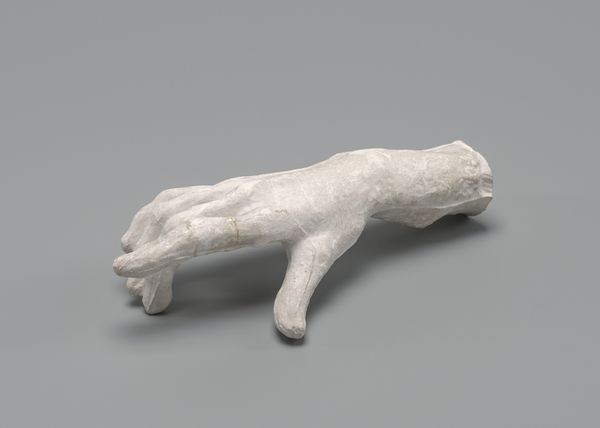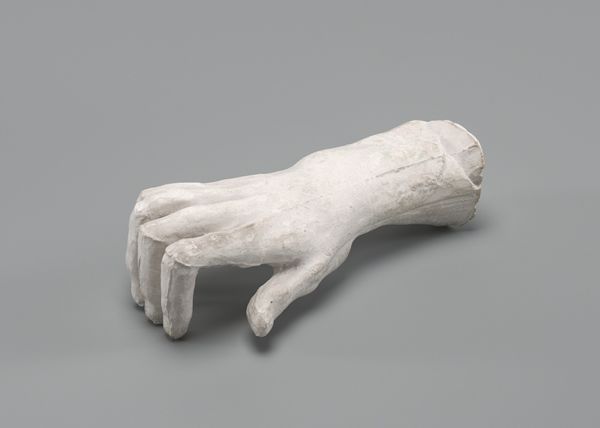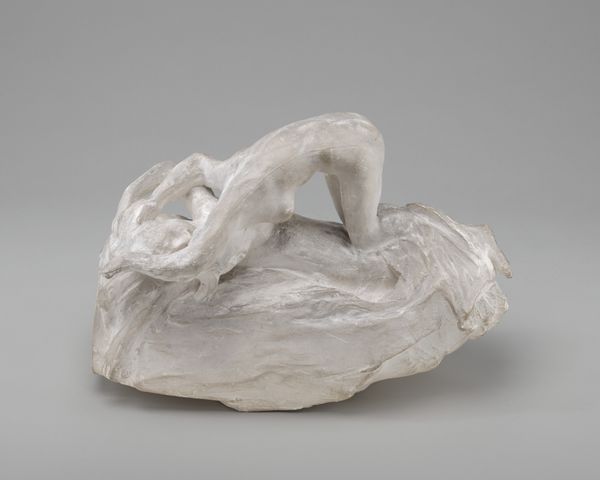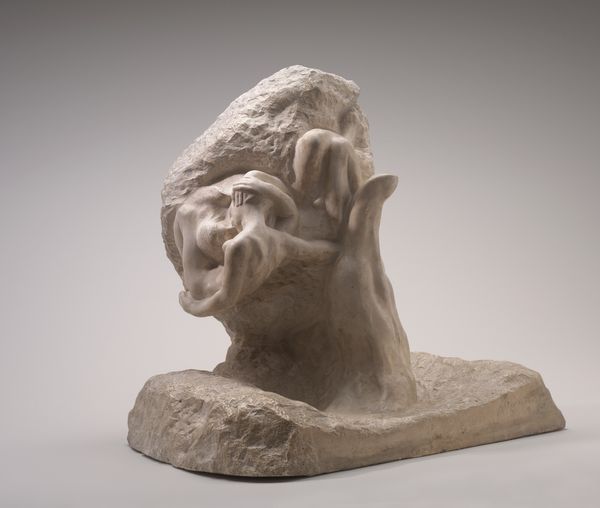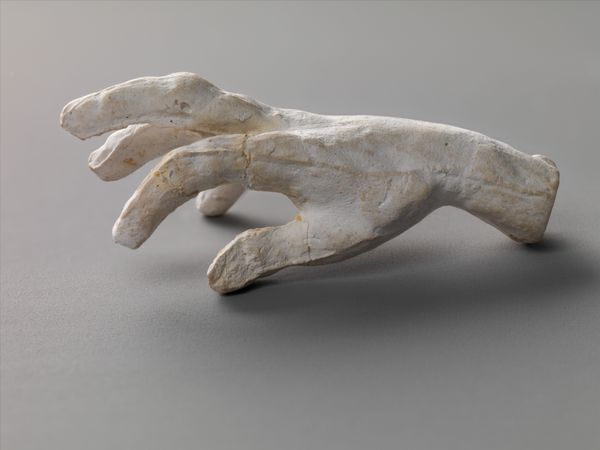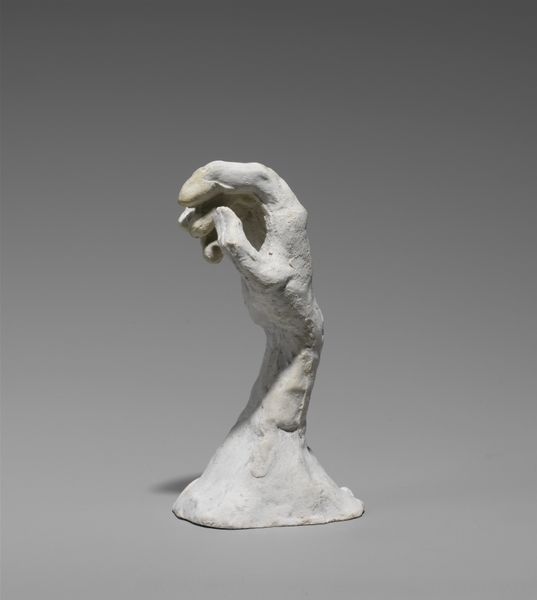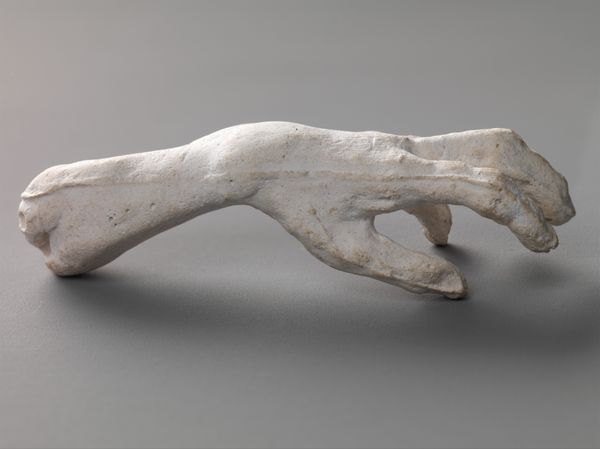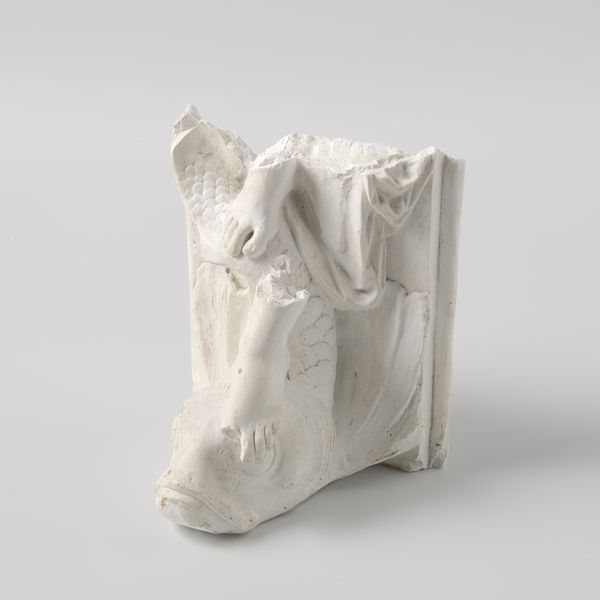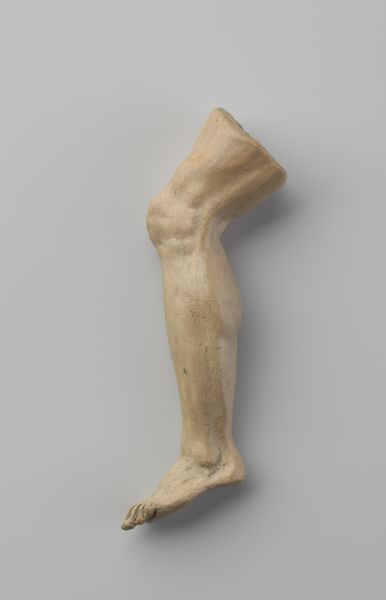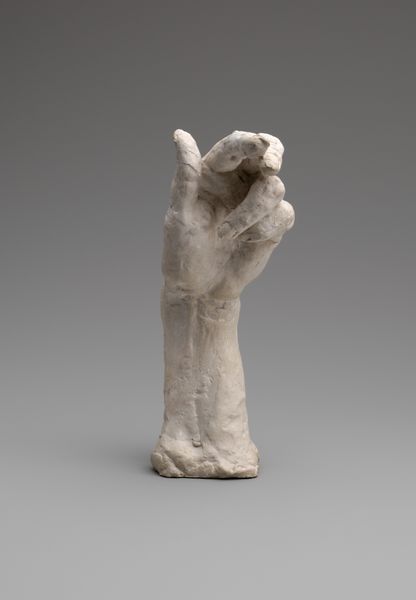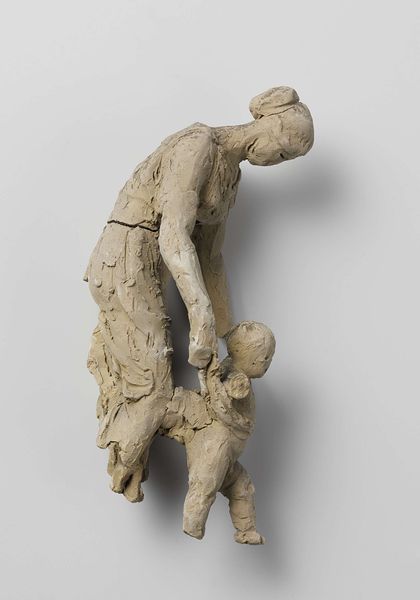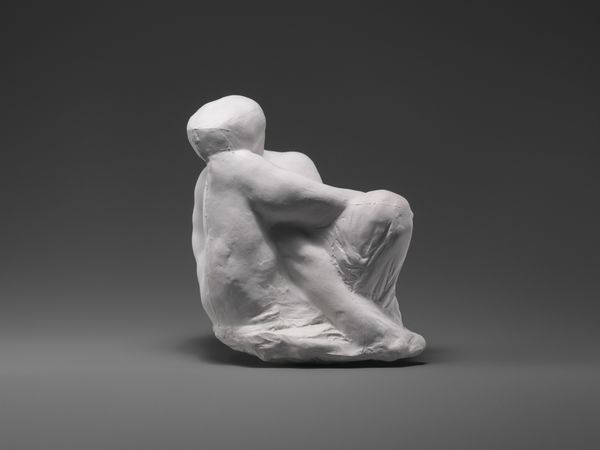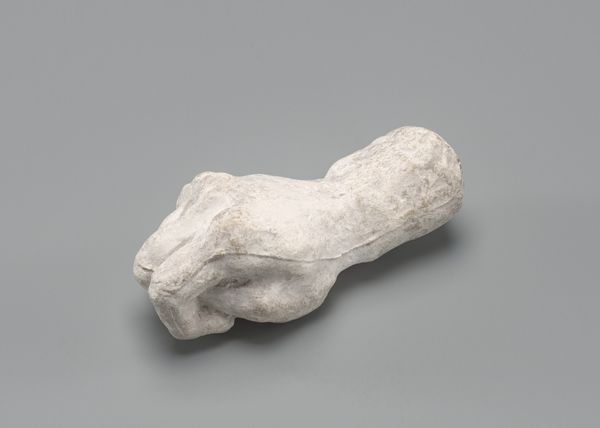
Dimensions: overall (greatest extension): 22.9 cm (9 in.)
Copyright: National Gallery of Art: CC0 1.0
Curator: Well, the contrast between the scale of the hand and the tiny body creates an interesting power dynamic. It is hard to discern emotions, but something about this seems unsettling. Editor: That's Rodin's "Hand of Rodin with a Female Figure," sculpted in 1917. Rodin's hands are prevalent throughout his oeuvre. It’s not just about their anatomical accuracy; it’s about their performative ability to speak a language of emotion and physical labor. In fact, he frequently employed studies of hands as independent artworks. This one is made in bronze, carrying the markings and aesthetic preferences for romanticism in sculptures of the period. Curator: So, the hand isn't just any hand, it is Rodin’s own hand? Knowing that brings in his own story, reputation and ego into the image, casting him, maybe problematically, as the sculptor, the creator, the powerful artistic "hand of God". Editor: Precisely. The fragment of a female nude becomes this object entirely subjected to Rodin's grasp. Consider the social context of the time. There was intense artistic activity in Rodin’s studio where it functioned as both a workplace and something of a spectacle. He managed a huge output from his studio as a way of mediating the production and reception of his artworks by critics and patrons. Curator: And I see how the symbolism reinforces that narrative. The female form, a fragment, cradled, almost possessed by this dominating hand. It’s a powerful and complex visual metaphor for the artist’s control over his subject. We can draw some interesting discussions on that and the concept of artistic ownership. The symbolism does add this psychological tension. Editor: It prompts some serious questions. Where is the power, and how is it visualized and embodied? Who is holding who in the broader social frame of making art? Curator: Absolutely, I can't unsee it. This sculpture certainly presents a fertile ground for reflection and discussion, doesn’t it? Editor: Indeed, something about Rodin’s work allows for the artist’s own symbolism to be constantly reevaluated by us even today.
Comments
No comments
Be the first to comment and join the conversation on the ultimate creative platform.
